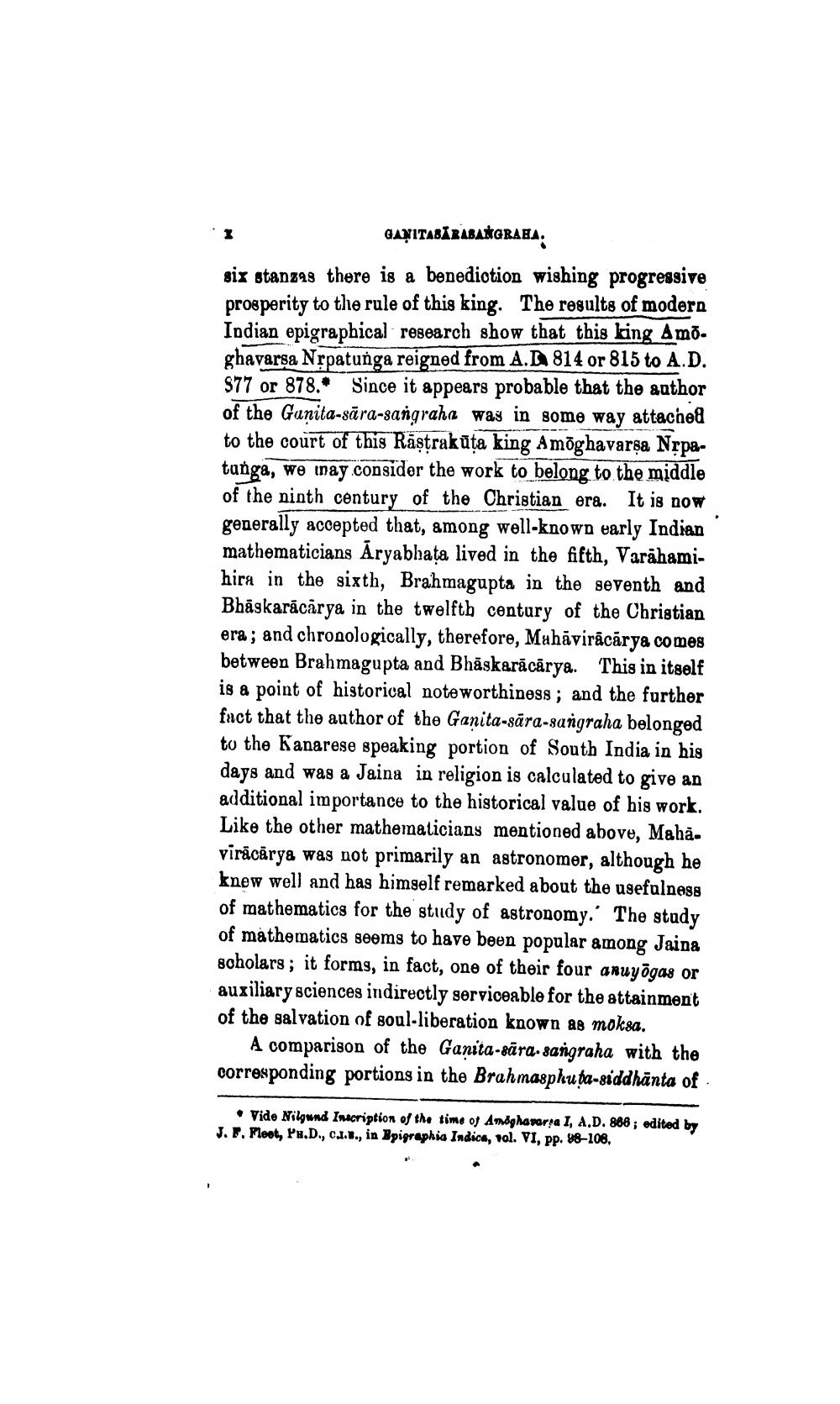________________
GANITAB RABANGRAHA six stanzug there is a benediction wishing progressive prosperity to the rule of this king. The results of modern Indian epigraphical research show that this king Amo. ghavarsa Nrpatunga reigned from A.814 or 815 to A.D. $77 or 878. Since it appears probable that the author of the Ganita-sāra-sangraha was in some way attached to the court of this Rāstrakūta king Amõghavarşa Nrpatanga, we inay consider the work to belong to the middle of the ninth century of the Christian era. It is now generally accepted that, among well-known early Indian mathematicians Aryabhata lived in the fifth, Varahamihira in the sixth, Brahmagupta in the seventh and Bhāskarācārya in the twelfth century of the Christian era; and chronologically, therefore, Muhāvisācārya comes between Brahmagupta and Bhāskarācārya. This in itself is a point of historical noteworthiness; and the further fact that the author of the Ganita-sāra-sangraha belonged to the Kanarese speaking portion of South India in his days and was a Jaina in religion is calculated to give an additional importance to the historical value of his work. Like the other mathematicians mentioned above, Maha. virācārya was not primarily an astronomer, although he knew well and has himself remarked about the usefulness of mathematics for the study of astronomy.' The study of mathematics seems to have been popular among Jaina scholars; it forms, in fact, one of their four anuyôgas or auxiliary sciences indirectly serviceable for the attainment of the salvation of soul-liberation known as moksa.
A comparison of the Ganita-sāra. sangraha with the corresponding portions in the Brahmasphuta-siddhānta of
• Vide Nilgund Inacription of the time of Amoghavara I, A.D. 888; edited by J. P. Pleot, PH.D., C.I.v., in Epigraphia Indica, rol. VI, pp. 48-108.




